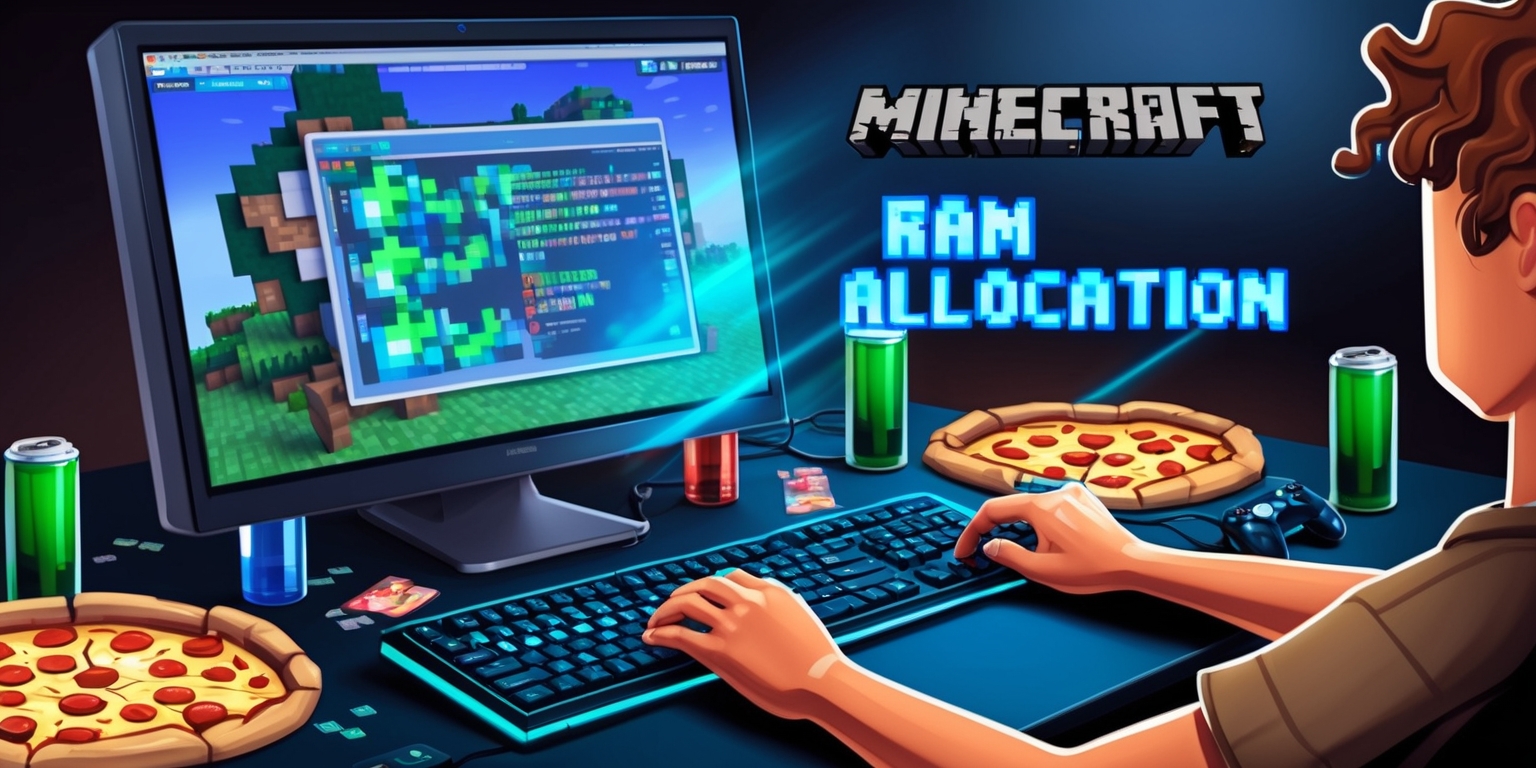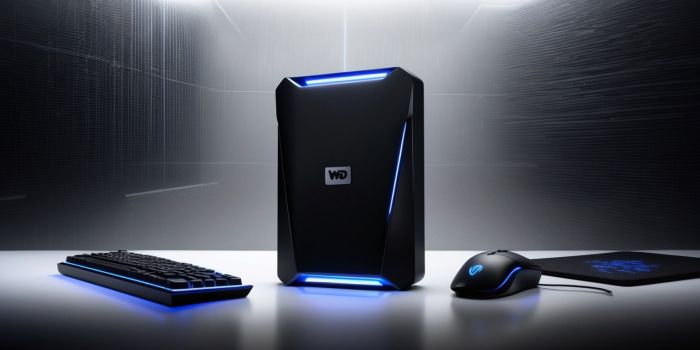 2025-09-06 05:09:54
2025-09-06 05:09:54
Unleashing Minecraft's Potential: Strategic RAM Allocation for Superior Gameplay
For many players who delight in extensive Minecraft worlds and creative building projects, performance is a key factor in enjoying the game. When playing on the Java edition, optimizing resource allocation can lead to smoother experiences, whether navigating sprawling modded universes or managing vast multiplayer interactions. The method of enhancing performance by adjusting how memory is dedicated to the game can be both empowering and essential to maintain a fluid gaming session. This guide offers insight on how to tweak these settings, ensuring that every pixel and biome loads with precision. By managing the available RAM wisely, you can see improved responsiveness during high-demand scenarios and explore new realms with confidence.
Enhancing Resource Usage
Allocating more memory generally benefits your game by allowing Minecraft to handle larger worlds and more complex operations with ease. In the realm of computing, understanding the delicate balance between available RAM and the demands of a game can make all the difference. Players who often expand their construction projects or engage in intricate redstone engineering frequently experience more fluid gameplay when memory is properly managed. The process involves modifying certain parameters within the Java arguments and using the dedicated launcher interface to ensure that enough memory is assigned. This careful allocation allows faster chunk loading and more fluid transitions among distinct sections of the game, ultimately elevating your overall experience. Improper adjustments, however, might put undue pressure on your system, so it is best to allocate resources wisely.
Understanding Memory Allocation
The concept of memory allocation in Minecraft centers on optimizing how much of your computer's available RAM is earmarked for running the game. For those using the Java edition, this step is essential, given that it entails diving deeply into the launcher's settings and tweaking JVM arguments. The principle is simple: allocate memory that is sufficient to support your in-game activities without overwhelming your system's primary functions. Whether you are constructing complex redstone circuits or venturing through large biomes filled with custom mods, having enough memory ensures that your experience remains uninterrupted. It requires a recognition of your overall computer resources, where balancing between what is needed for gameplay and other running applications becomes a key decision that can directly influence performance.
Usage in Diverse Gameplay Scenarios
Minecraft gameplay is highly variable; sometimes you find yourself exploring quaint villages, while at other moments you might be managing a fortress filled with intricate machinery and modifications. Allocating more RAM is a versatile solution that adapts to these challenges. In scenarios where your world starts to expand, or when playing on large servers with a high number of participants, enhanced memory allocation improves chunk loading speeds and reduces lag. This setup might prove extremely advantageous when you utilize resource-intensive mods that demand extra computational power. Furthermore, when you traverse vast realms or engage in collaborative projects online, having additional memory available ensures that gameplay is consistent, responsive, and enjoyable despite the increasing complexity of your in-game environment.
Balancing Modded and Vanilla Worlds

Distinct gameplay modes, such as vanilla versus modded Minecraft, inherently come with different demands on system resources. In a vanilla setting, a minimal allocation of memory, typically around 3-5 GB, often suffices to deliver smooth performance. However, as soon as mods enter the picture – adding new creatures, biomes, and mechanisms – the need for enhanced memory becomes evident. Players who wish to incorporate these modifications are advised to allocate up to 7 GB or more, depending on the volume of additional content. Allocating more RAM in a modded environment not only improves load times and visual fidelity but also ensures the stability of gameplay. It is crucial to consider how much total memory your PC has and to adjust allocations accordingly, enabling your custom-built worlds to function efficiently while preserving overall system performance.
Technical Process Explained
The technical process behind increasing RAM allocation begins with a keen look at your computer's overall memory configuration. Once you ascertain the total available memory, you launch the Minecraft Java edition and navigate to the Installations tab. The next step involves editing the installation configuration by selecting the appropriate release and adjusting the JVM arguments. Look for the specific parameter that begins with a flag like "-Xm" and change the disk or GB value to match your allocation needs. The procedure is very intuitive for individuals already versed in basic configuration modification but may require a little practice for beginners. It is essential to ensure that you leave adequate memory for other system operations, so that your overall computer performance remains unaffected while you enjoy a smoother Minecraft experience.
Operating System Considerations
While increasing the RAM for Minecraft can significantly enhance performance, it is important to consider how different operating systems manage memory. Windows, macOS, and Linux each handle resource allocation distinctively, influencing how well additional RAM is utilized by the game. For instance, on a system with Windows, you might notice a direct transfer in improved frame rates and faster navigational responses in your Minecraft world, as the operating system efficiently prioritizes game processes. In contrast, users on different platforms should check system-specific guidelines to ensure compatibility with the memory adjustments. This aspect is particularly significant because an imbalance in allocation might leave less memory available for essential background applications, potentially leading to slower overall responsiveness. Hence, understanding your operating system's nuances proves key in achieving an optimal gaming experience.
Real-Time Monitoring of Performance
Monitoring performance while playing Minecraft is integral to determining if the allocated memory meets your gameplay requirements. Using in-game tools, such as the debug screen which appears when the F3 key is pressed, you can observe real-time statistics on memory usage. The section usually labeled "Mem:" provides insights into the percentage of RAM being used by the game. Observing this display, you can ensure that the allocation remains within the optimal range, which typically lies between 20% and 40% of your total memory. This immediate feedback loop enables you to identify potential performance bottlenecks during intense gameplay moments. By regularly checking these metrics, you develop a better understanding of your system's response to varying in-game conditions, helping you make informed adjustments for prolonged and enhanced play sessions.
Adjusting Launcher Settings
Accessing the Minecraft launcher offers a user-friendly interface for fine-tuning your memory allocation, especially For those who prefer not to explore in depth into complex system configurations. After launching the Java edition, navigate to the Installations tab to locate "the edition of the game you're currently playing". By clicking on the edit button associated with that particular installation, a menu appears where the advanced JVM arguments are revealed. In this section, simply modify the memory allocation command by changing the numeric value to the desired amount. This straightforward method is engineered to accommodate both novices and seasoned professionals, striking a perfect balance between ease of use and customization. Players who experiment with these settings can quickly see how performance metrics change, allowing for further adjustments as needed during their gameplay sessions.
Customizing Through Third-Party Tools
For players engaged in modded or heavily customized Minecraft setups, third-party modification tools provide additional ways to manage memory allocation. Platforms like CurseForge come with built-in options to adjust allocated RAM through intuitive sliders or dedicated settings menus. These tools streamline the process, catering specifically to complex mod environments where multiple modifications require precise configurations. By integrating such technologies, you ensure that your game maintains a harmonious balance between creative modifications and system performance. This customization option empowers players to tailor their game experience further, bridging the gap between basic game settings and advanced modifications. The use of such applications proves beneficial when handling diverse and resource-intensive mods, guaranteeing that the additional memory supplements your gameplay rather than hindering your system’s overall performance.
Optimizing for Complex Servers
In multiplayer settings, especially on large and active servers, the allocated memory plays an essential role in determining the quality of the gameplay experience. Many servers host vast numbers of players and feature complex build structures and dynamic environments. In these instances, ensuring that Minecraft has sufficient RAM allocated minimizes lag and enhances synchronization between client and server. When many players are interacting simultaneously and numerous chunks are being loaded, having extra memory can greatly reduce delays and interruptions. Server administrators and regular players alike benefit from these adjustments, as it allows for more stable in-game interactions and smoother communication. The process involves similar adjustments within your Minecraft launcher, and care must be taken to balance your overall system resources so that maintaining network performance remains seamless.


